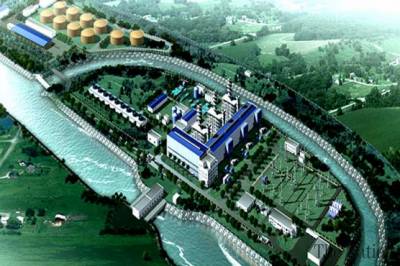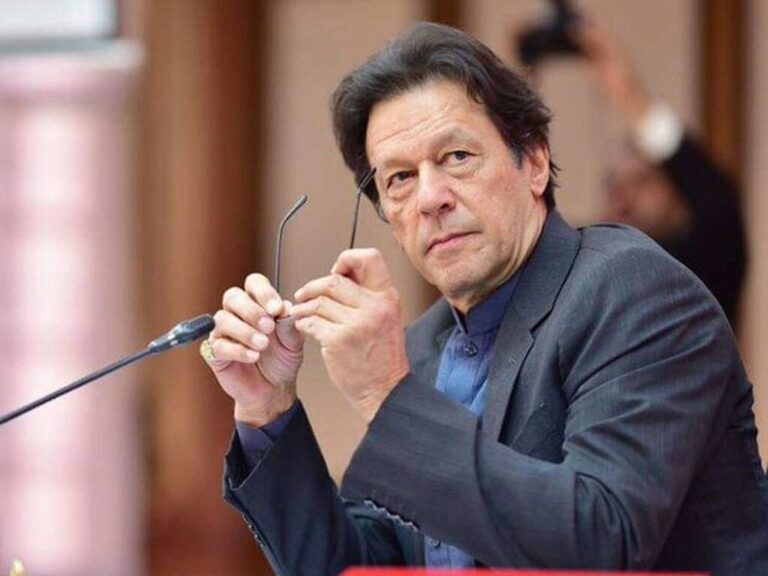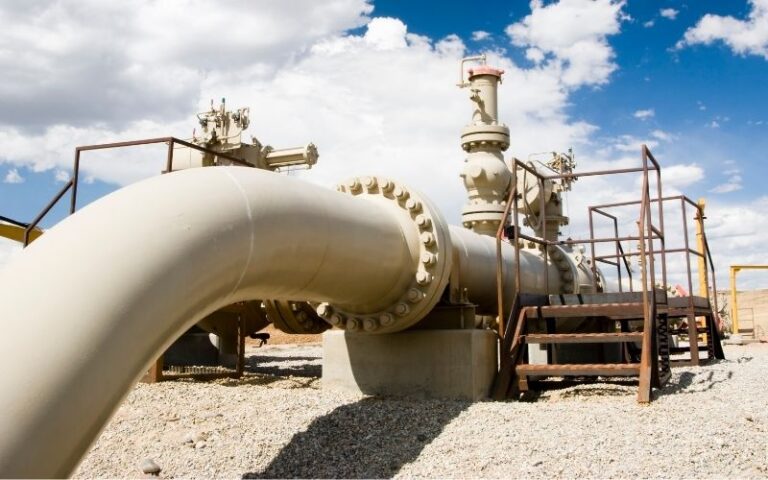Nandipur Power Plant: Scams, Scandals, and Probe
By: Shahzad Ahmed
This combined-cycle thermal power plant at Nandipur, in the Punjab region of Pakistan, has a power project of 425 MW (capacity of 525 MW). Nandipur is a 425 MW. The project was finished in March 2015 and was built by China Dongfang Electric Corporation.
The original cost was Rs. 27 billion. However, it increased throughout project cycle one amended, and at completion, it amounted to Rs. 58,42 billion. During and after the start of its commercial operations, the power plant experienced several difficulties.
The project draws a range of legal lawsuits investigations, investigations, audits, and political and trade conflicts before and after completion.
After five days of operating, the facility collapsed, and Prime Minister Nawaz Sharif launched a series of investigations.
Read More: PSO to get stakes in Guddu, Nandipur plants
At Rs. 12 per unit, the power station generated energy with less than 43 percent use. It was ultimately agreed to convert the plant into RLNG to make the project workable and minimize yearly losses.
The facility was eventually converted to RLNG in 2017 after a tug-of-war on NEPRA and other issues. [8] The Nandipur Power Project, which was established on January 2, 2014, and headquartered in Lahore, belongs to the Government of Punjab and is managed by the Nandipur Thermal Power Generation Company Limited.
Discussion
During the project’s beginning, there was a crisis.
The Government of Punjab of Pakistan signed a Rs 23 billion ($329 million) deal with China Dongfang Electric Corporation of China to build the Nandipur Power Plant in January 2008, using the 18th Amendment clause.
The project was delayed for two years, from March 2010 to March 2012, due to a disagreement between the Ministry of Water and Power and the Ministry of Law and Justice. The Government of Law and Justice objected to a breach of PPRA regulations and the awarding of the contract to China Dongfang Electric Corporation, which was blacklisted.
The ministry also refused to verify the permits before explaining processes. Consequently, $85 million of equipment has been delayed at the Karachi Port for almost two years.
Zhang Guorong, the president of Dongfang Electric Corporation, canceled the contract for the building of the Nandipur Power Project in September 2012, claiming that his firm had incurred $85 million in damages.
Launch of the Nandipur Power Plant
The Ministry of Water and Power of Pakistan began renegotiating the contract with Dongfang Electric Corporation in June 2013 to restart construction on the Nandipur Power Project.
The company decided to restart construction on the power station after successful talks. On July 8, 2013, experts from Dongfang Electric Corporation came to Karachi to examine and ensure the release of equipment stranded at the Karachi Port.
The contractor resumed work on the project later, at an increased cost of Rs. 57.4 billion. Then-Prime Minister Nawaz Sharif had launched the project eventually on May 31, 2014, after numerous delays.
However, owing to mismanagement, disputes with the National Electric Power Regulatory Authority (NEPRA) over excessive production costs, and the use of wrong fuel, the plant remained operational only for five days after the inauguration and had to be shut down.
Read More: Concerns of potential buyers of power plants?
Since then, the facility has been the subject of numerous scandals and operational problems, leading to investigations and examinations of project theft.
Operational Crisis and revival of the project
Inquiries into the project’s collapse, Nandipur’s electricity was very costly, costing Rs 42 per unit and then the government shut down the facility after just five days.
In addition to its inefficient cost, the plant’s efficiency was less than 42%, even lower than that of decades-old power plants in the nation, such as Hub Power Company facilities built in the 1990s, which generate energy for Rs. 7.65 per unit (kwh).
Following this failure, Pakistani Prime Minister Nawaz Sharif requested two independent audits, one by an international auditing company and Pakistan’s auditor general. F. Ferguson & Co., a hand-picked auditing company, declined to get involved in the issue, limiting itself to a financial audit solely. Following the audit, it was discovered that the Chief Minister of Punjab established the post of Managing Director as a personal decision, even though no such position was specified in the original arrangement.
Cap. (R) Muhammad Mehmood, a Parks Horticulture Authority (PHA) grade 19 official, was appointed managing director with a hefty remuneration despite having no relevant professional experience.
Without consulting the company’s technical personnel and engineers, the managing director commissioned a low-capacity furnace oil treatment plant (FOTP). The furnace-operated facility was destroyed as a consequence of this.
The Nandipur Power Plant was first started using the incorrect fuel, causing damage to the plant and necessitating the invocation of the O&M contract.
To hide errors, inept companies were given long-term contracts for O&M, eventually leading to the project’s cancellation.
Project administrative changes
Since its opening, the factory has been the subject of media criticism, and opposition parties have raised concerns about it, inflicting political harm to the administration.
Following the release of an audit report and inquiry findings in October 2015, Nawaz Sharif acted quickly to alter the project’s management. The project was turned over to the Ministry of Water and Power from the Punjab government, and controversial managing director Cap. (R) Tariq Bhatti replaced Muhammad Mehmood.
Shahzad Akbar has been named as the project’s director. Khawaja Asif, the Minister of Water and Power, officially acknowledged the project’s failure owing to administrative blunders and incompetence.
Disputes with NEPRA
The plant’s electricity was very costly, at Rs. 42 per unit, with less than 40% efficiency; however, NEPRA reduced the cost to Rs 11.63 per unit in April 2015.
The government requested that this fee be increased to Rs. 15.63 per unit, with a total recovery of Rs. 23 billion from customers. The Ministry of Water and Power said that the plant would go bankrupt due to yearly losses and production expenses that were much greater than the rates.
On January 29, 2016, NEPRA heard the appeal and dismissed it, refusing to impose any further financial obligations on the customer. [26] The government decided to take the issue to court in September 2016 after NEPRA declined to raise a second review rate.
NEPRA pointed to the previously provided study, which cited the plant’s inefficiency, and refused to pass on any extra fuel costs or inefficiencies to the customer. The factory was closed in June 2016 due to yearly losses and excessive production expenses. NEPRA has expressed concerns about the loss of billions of rupees due to the plant’s shutdown after June 2016.
Read More: PSO posts Rs 18.2b profit in 9MFY21
To get a sense of the scope of the issue, the National Transmission & Dispatch Company (NTDC) stated that Nandipur was losing money beyond recovery due to operating cost overruns, including interest on loans obtained for commissioning monthly interest on loans borrowed. For example, the plant lost Rs. 4.46 billion to the national exchequer in June 2016 while producing expensive energy and not recouping its production costs.
Another dispute arose in February 2017, when China’s Hydro Electric Power System Engineering Company (HEPSEC) was granted an O&M contract at 85 paise per unit, 80 percent more than NEPRA’s allowed rate of 48 paise per unit. The plant’s allowed rate for planned gas conversion was considerably lower, at 34 paise per unit.
Plant conversion to RLNG (Regasified Liquefied Natural Gas)
The Nandipur Electricity Project generated unsustainable amounts of per-unit power even after becoming operational, with average capacity utilization of about 40%.
Mohammad Younus Dagha, the former Federal Secretary of the Ministry of Water and Power, acknowledged that building a gas-fired plant in Punjab, which had gas shortages in 2008, was a poor decision in the first place and that operating it with frequent losses was adding insult to injury.
With enough LNG on hand, he believes it should be converted to gas. The Economic Coordination Committee (ECC) ultimately authorized a Rs 30.6 billion loan to convert Nandipur Power Plant to a gas operation in late 2016.
Nandipur began a 525 MW test run on regasified liquefied natural gas (RLNG) on April 23, 2017, with a daily gas supply of 30 million cubic feet (850 thousand cubic meters) from Sui Northern Gas Pipelines Limited (SNGPL).
Despite the conversion, the facility could not maintain a financial balance between generating costs and output recovery. For example, Sui Northern Gas Pipelines Limited (SNGPL) cut off gas supplies to the facility in April 2018 after defaulting on Rs. 900 million in debt.
In addition to the conversion to RLNG, Northern Power Generation Company Limited (NPGCL) and China’s Hydro Electric Power System Engineering Company (HEPSEC) inked a 10-year operation and maintenance (O&M) contract.
Read More: PML-N handed over ‘landmine’ of circular debt
However, owing to several bureaucratic problems, the start of operations and maintenance was postponed. Despite high production costs and other controversies, the facility generated 460 MW to 480 MW with four gas turbines and one steam turbine before shutting down for a month on March 6, 2018.
Scams, Scandals, and probe of Nandipur Power Plant
Requests for information
After just five days of operation, the first investigations into plant failure were started. Prime Minister Nawaz Sharif authorized the investigations after the failure created political humiliation. The majority of the investigations focused on the following issues:
- How a smaller-capacity Furnace Oil Treatment Plant (FOTP) was built at the site.
- MD Nandipur’s and NESPAK’s roles in the aforementioned installation.
- Who deceived Prime Minister Nawaz Sharif at the plant’s opening, causing the government embarrassment?
- Who gave General Electric (GE) false information about the quantity of furnace oil and its filtering requirements?
- The plant was damaged using the incorrect fuel, and replacement components took another three months to arrive.
- What is the significance of MD? Even though a fully computerized factory seldom needs outsourcing, Captain(R) Muhammad Mehmood attempted to lease the operation and maintenance (O&M) to a Malaysian company and subsequently to a US firm.
- The plant’s managing director went to training in the United States, but the technical staff was barred from going. Even employees sent to China for training were not assigned any tasks and were kept on the sidelines, with no participation in technical operations.
Shehbaz Sharif was also asked the following questions.
- Despite his lack of technical expertise or credentials, controversial Parks and Horticulture Authority (PHA) officer Capt. (R) Muhammad Mehmood was appointed as managing director of Nandipur.
- Despite the Nandipur disaster, he was given a 1,600% raise in pay and was subsequently decorated with the Tamgha-e-Imtiaz honour.
- Misappropriation of money and violations of the Public Procurement Regulatory Authority’s (PPRA) regulations in acquisitions.
- The contract was awarded to China Dongfang Electric Corporation, a banned firm. [10]
During the PPP regime, the escalation of costs raised the question around ex-minister for Water and Power Raja Pervaiz Ashraf, ex-law minister Dr Babar Awan, and former law secretary Pir Masood Chishti. They are accused of contributing to the project’s delay by obstructing approval and incurring taxpayer damages.
Destruction of important project documents
Despite strong security measures, the most important records of fuel payments and other multi-million rupee embezzlements were burned in September 2016.
Important computerized import records were also erased from backup drives and computer systems.
This occurred when opposition lawmakers in Punjab expressed alarm over the burning of documents in high-profile cases.
Two guards were detained after the chief security officer (CSO) Rana Mahtab Alam filed a complaint. Later, he was found guilty of identical offenses and was fired from his position.
In the same month, a Pakistan Electric Power Company team investigated the damage to the records and discovered that the majority of the claimed evidence of wrongdoing had been deleted.
On the instructions of the CSO, the guards detained in the case confessed to burning and shredding documents. Pre-arrest bail was given to CSO Rana Mahtab Alam, as well as numerous renewals afterward; Despite this, and he was unable to justify his conduct. After his bail was revoked in November 2016, Alam left the courtroom, thus halting the case’s progress.
Audit of Nandipur Power Plant
The National Audit Office is looking into allegations of corruption.
Following the publication of an AGP report in October 2015, Nandipur filed charges against numerous accusations of corruption and embezzlement. Senator Aiteraz Ahsan has requested that Pakistan’s National Accountability Bureau begin investigating the multibillion-dollar scam and ongoing losses to the country’s coffers caused by the project.
After the AGP reported significant escalations in cost, accusations of corruption and irregularities, and breaches of protocols inside the project, the NAB began an investigation. The investigation, however, hit a snag when key documents were destroyed by the plant’s security apparatus on unclear orders.
The investigation was delayed for two years until the public accounts committee (PAC) ordered the NAB in October 2017 to finish the outstanding Nandipur project investigation and accelerate its investigation into the multi-million dollar corruption scandal.
The NAB filed a reference in December 2017 alleging corruption and suspected misappropriations in Nandipur and the unlawful building of a road to the Sharif family’s home. The NAB further broadened the scope of its investigation by charging former PPP Water and Power Minister Raja Pervez Ashraf, former law minister Dr Baber Awan, former law secretary Pir Masood Chishti, and other officials of creating losses as a result of project delays.
Pakistan has been dealing with an energy crisis since 2007, and no measures have been made to guarantee that power-generation capacity keeps pace with population growth. With an average capacity of approximately 40%, the Nandipur Electricity Project generated unsustainable amounts of per-unit power.
The Economic Coordination Committee (ECC) ultimately authorized a Rs 30.6 billion loan in late 2016 to convert it to a gas operation. Despite the conversion, the facility could not maintain a financial balance between generating costs and output recovery.








